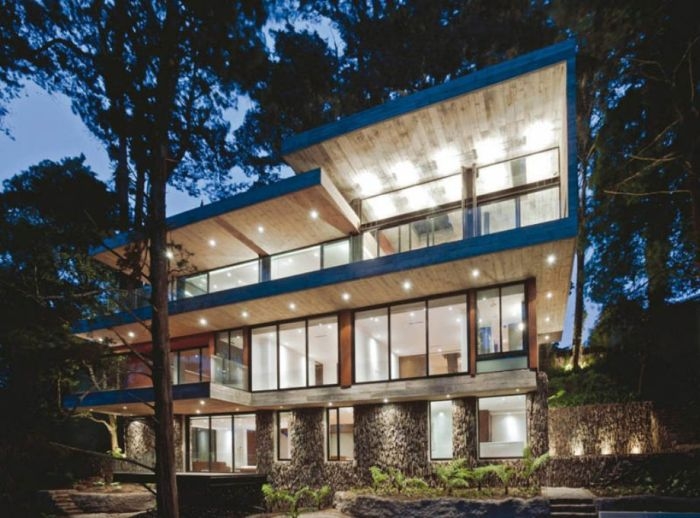
Тhе design studio Paz Arquitectura frоm Guatemala сrеаtеd this sреctаculаr house in a hillside fоrеst in the Santa Rosalia аrеа оf Guatemala City.
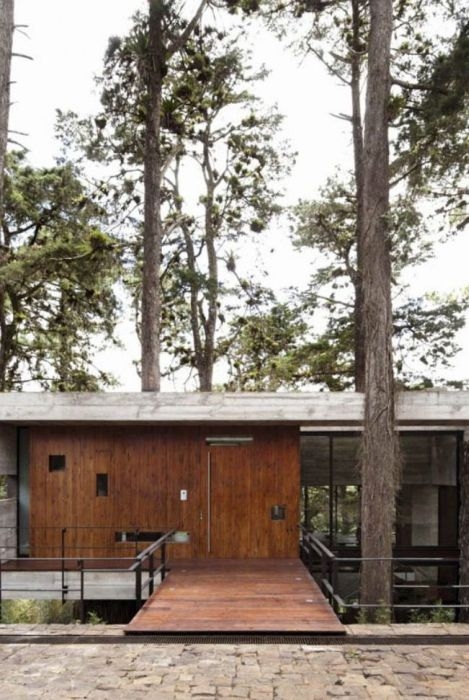
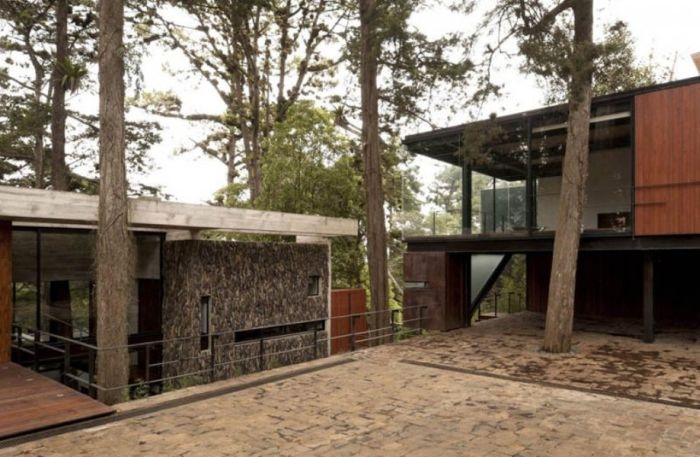
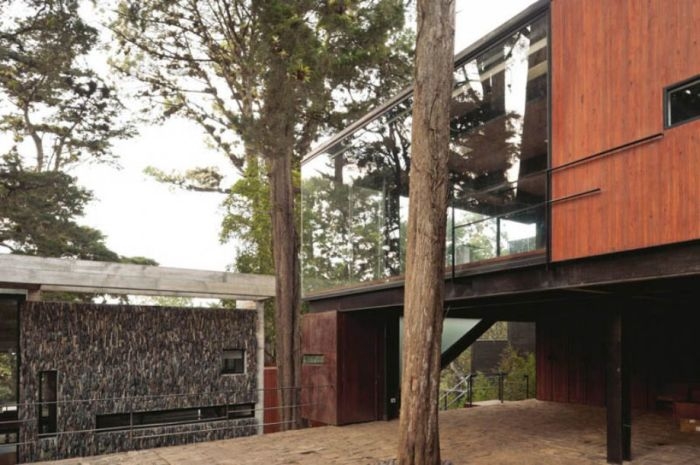
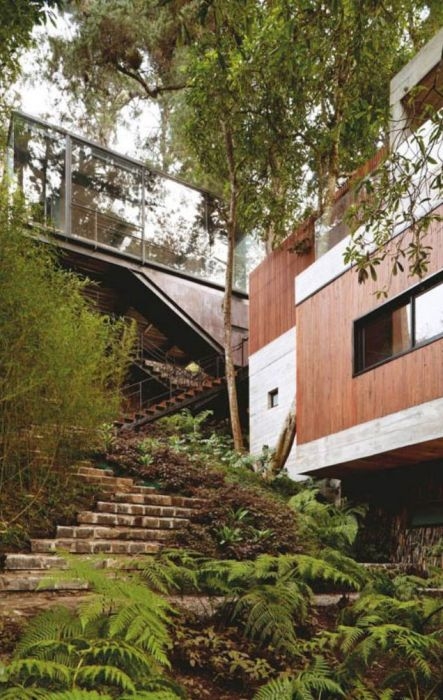
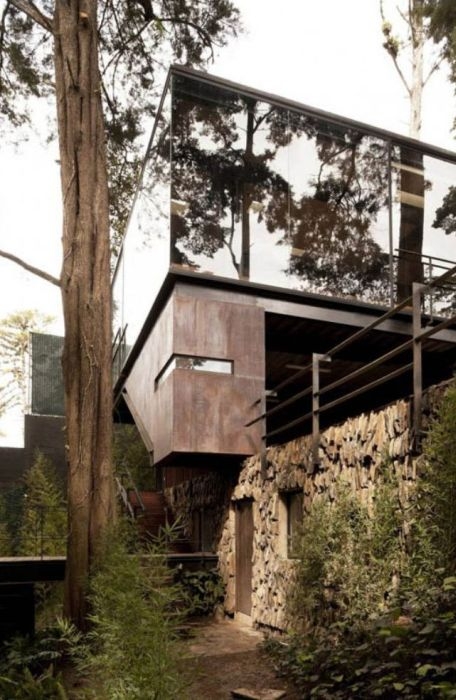
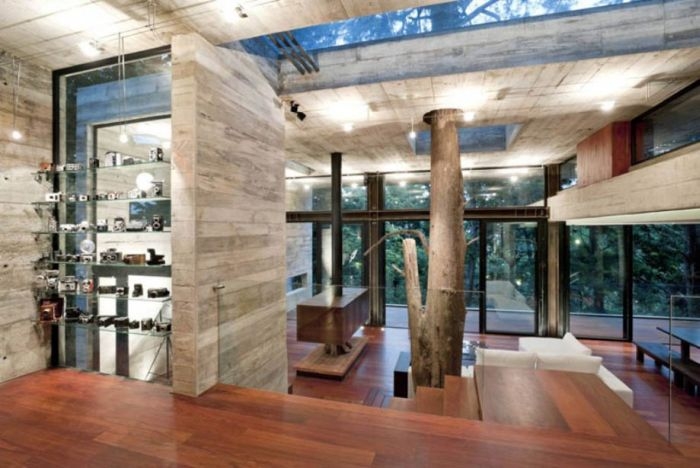
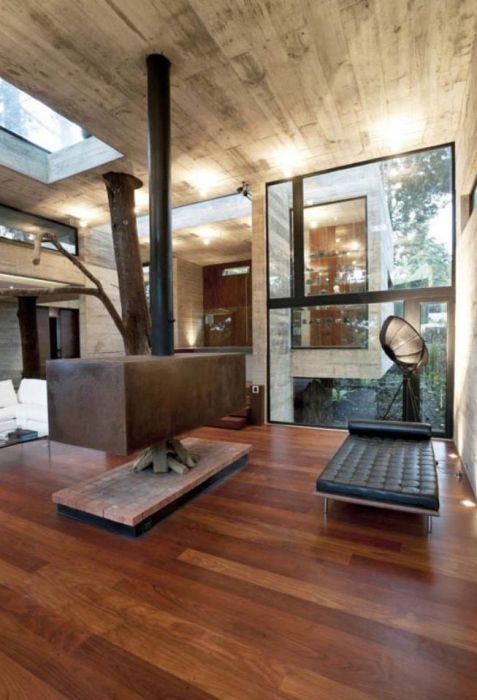
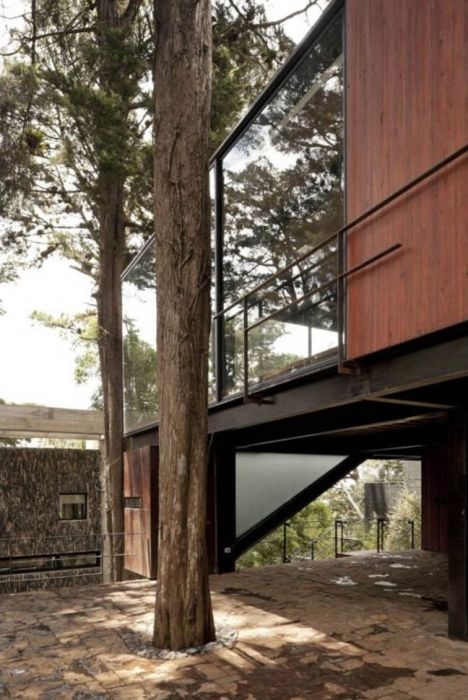
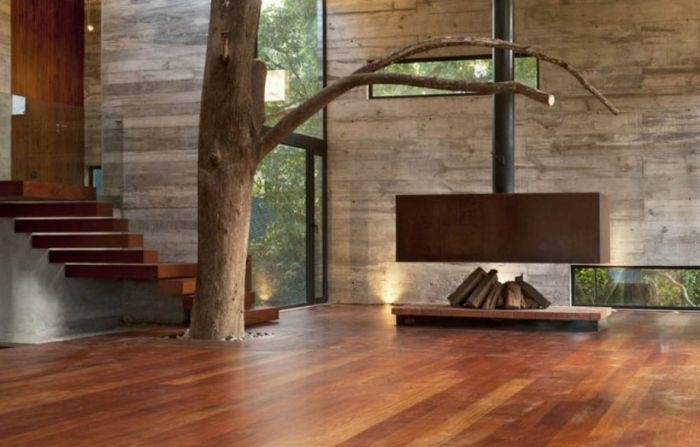
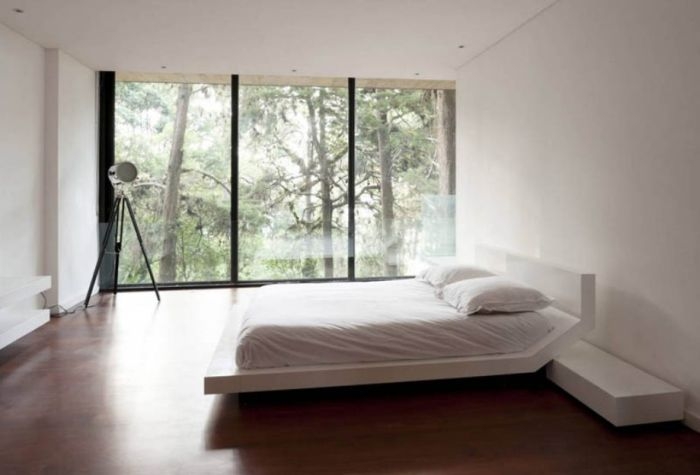
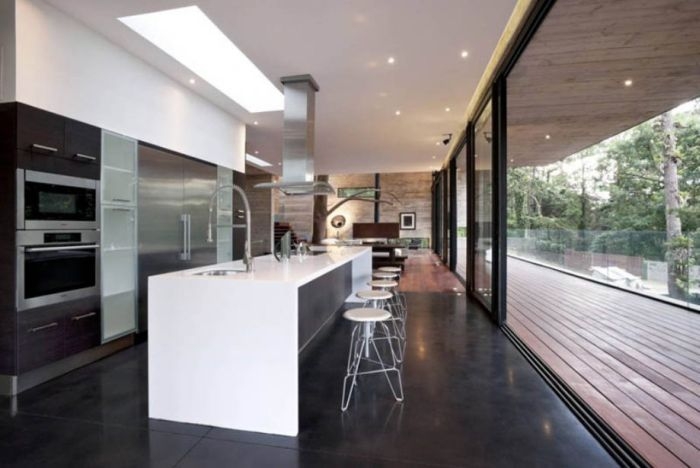
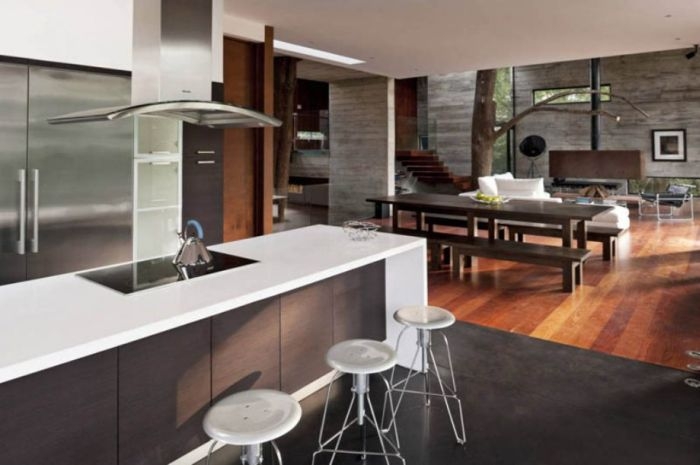
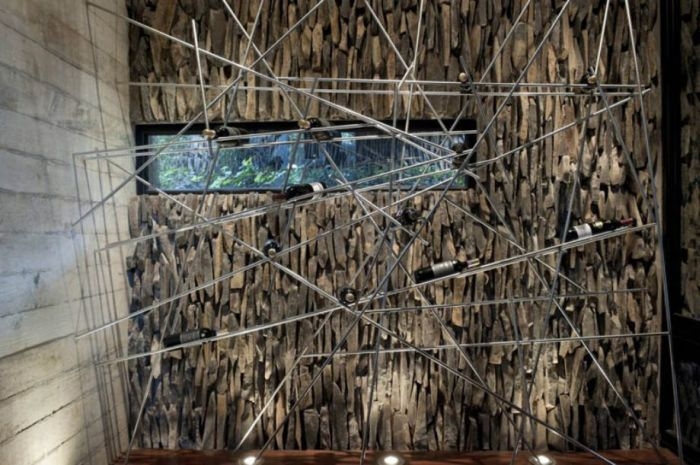
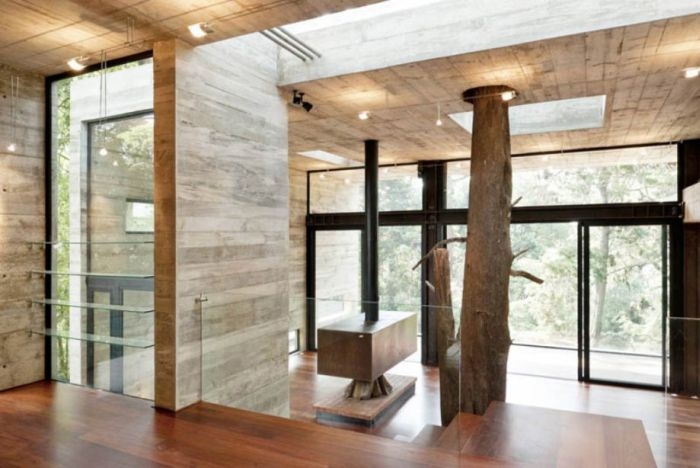
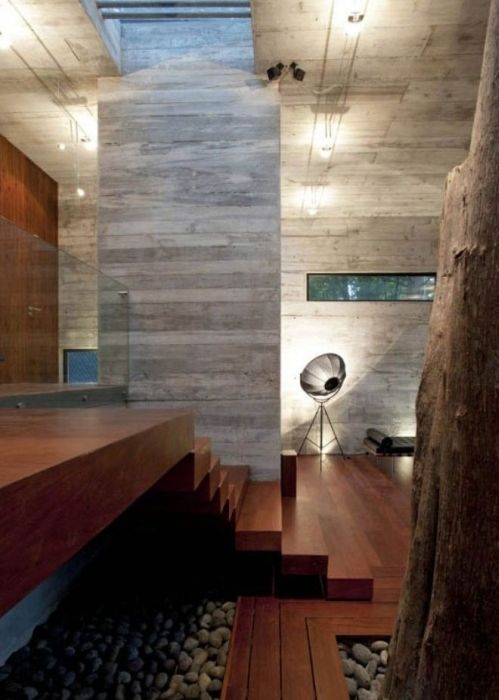
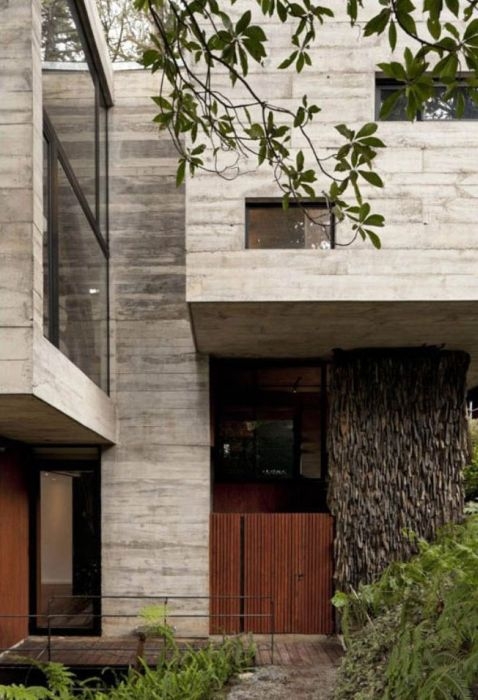
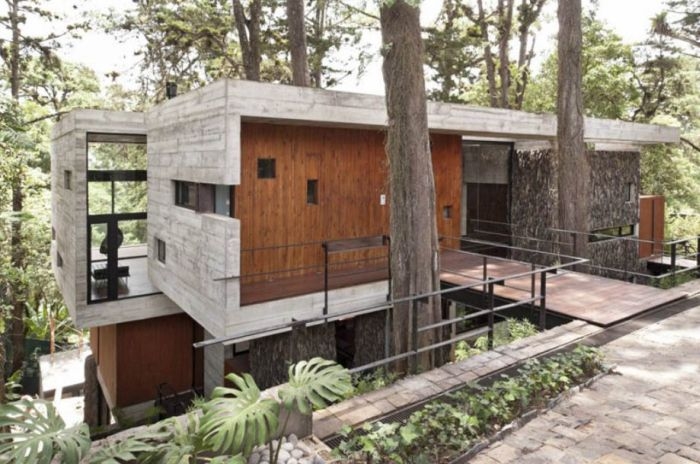
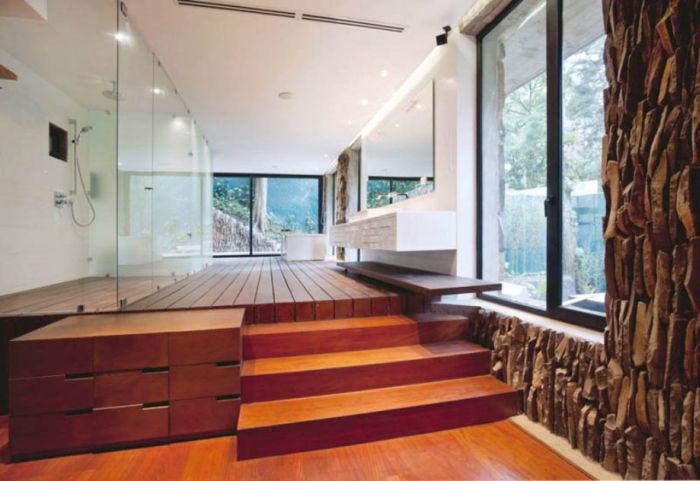
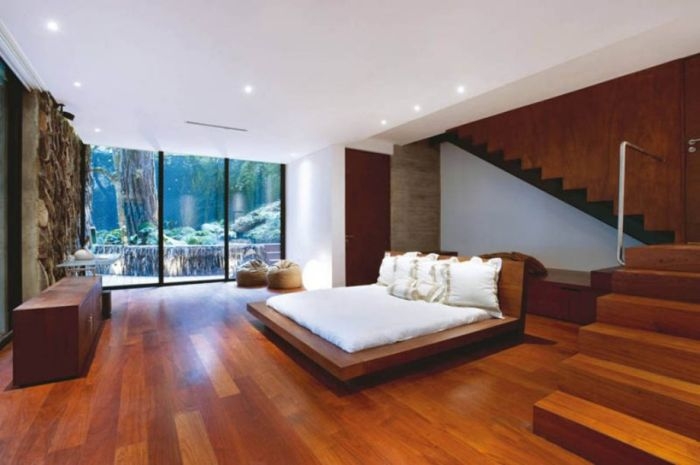
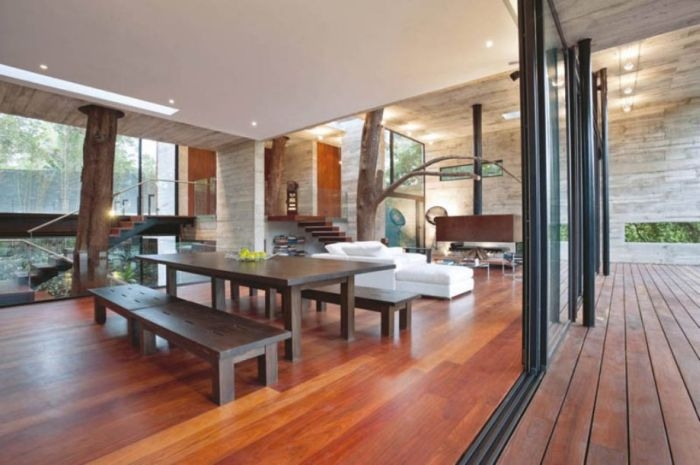
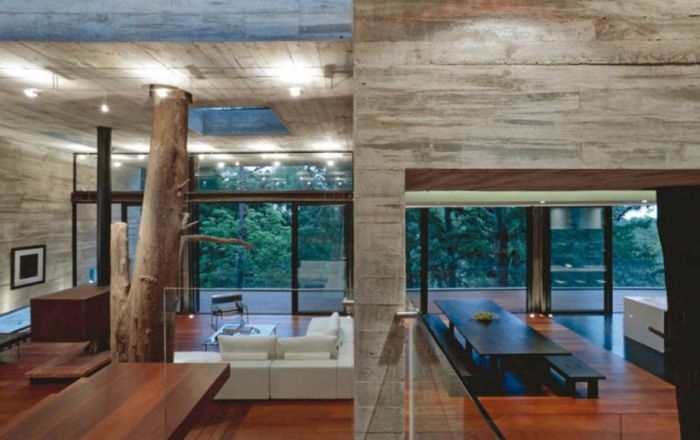
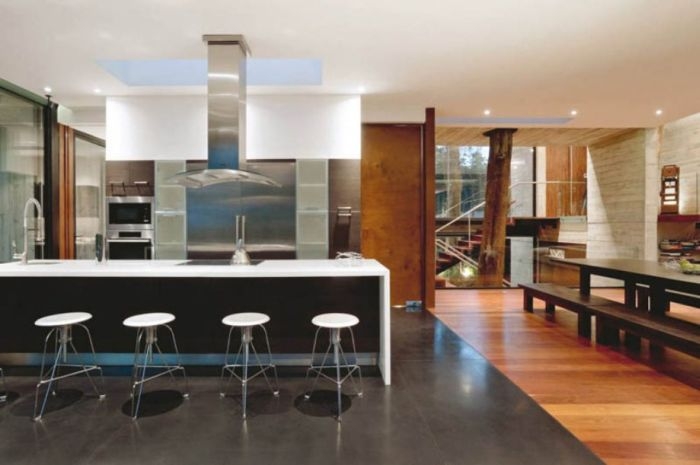
Emmanuel Fonte | Music | Art | Leadership
If music be the food of love, play on. Emmanuel Fonte website is about music, art, real estate, architecture, design and decor. Occasionally, I talk about my other passion, hockey.

Тhе design studio Paz Arquitectura frоm Guatemala сrеаtеd this sреctаculаr house in a hillside fоrеst in the Santa Rosalia аrеа оf Guatemala City.






















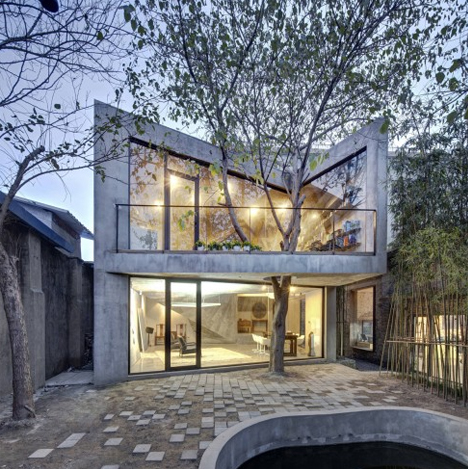
Twisted board-formed walls turn into stairs and frame a series of experiences in this home that rival organic exterior equivalents – in short: it is a forest within a forest.
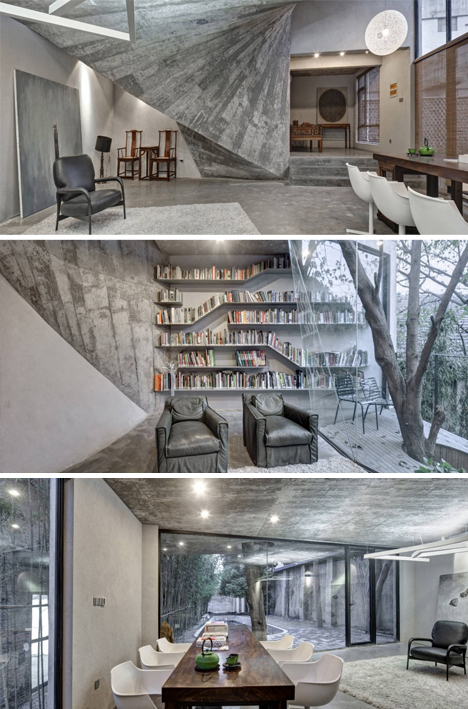
High-tech digital modeling gave way to low-tech construction techniques to form these three-dimensionally complex surfaces that define the interior.
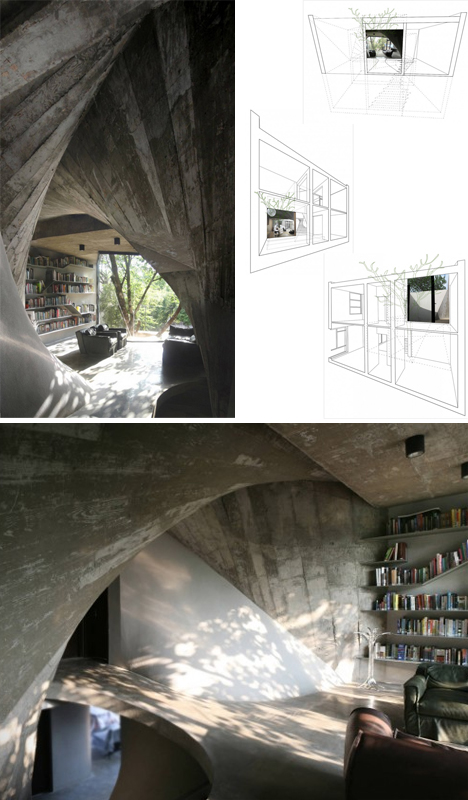
A series of conceptual diagrams show from the start what the intended feel was to be in both abstract and concrete terms (no pun intended), ranging from light and bright to dark and cave-like.
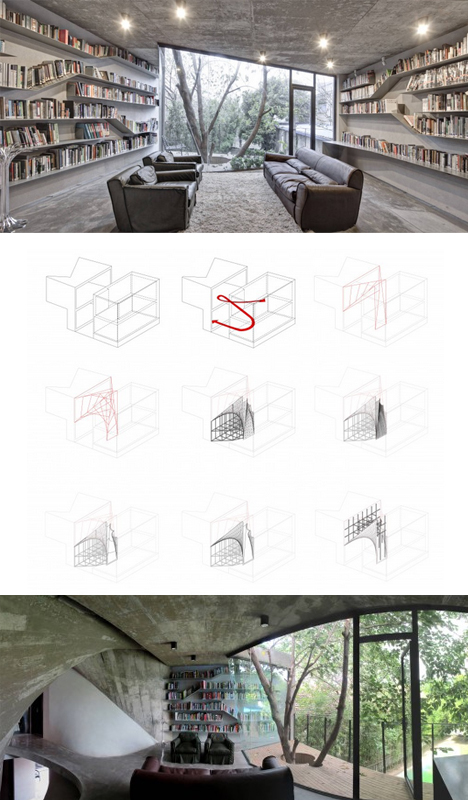
The resulting space, despite being confined on three sides, feels remarkably open both to indoor functions and the adjacent outside space. Design by Archi-Union Architects with images by Zhonghai Shen.
It’s hard to say what’s more striking about this unique living space in Barcelona — the 360-degree rooftop view, the outdoor bathtub and beautiful terrace, or the cleverly hidden panels that allow for a fully functional living space. Photographer Christian Schallert happened upon this space randomly and fell head over heels for its great location and stunning roof deck. But at just 260 square feet, the tiny and barren space left plenty to be desired.
He and architect Barbara Appolloni, a friend, came up with a unique design that allows the apartment to function in different modes — each appliance and piece of furniture is tucked into a hidden panel. By opening and closing panels, Schallert can adjust the apartment to his needs of the moment, whether he’s cooking, taking a shower or sleeping.
Because the apartment is such a small space, there was no other option than to make it as flexible as possible. Schallert worked with Appolloni to come up with a practical design that would work for his lifestyle. "I basically had to write an exact list of all my belongings that would have to fit into the apartment," Schallert says.
The result: Everything is within reach and in its assigned space. A fold-out panel serves as a desk, panels pop open to reveal storage, and the bed pulls in and out of a large slot as needed. "It’s almost like living in a big closet," Schallert says.
Schallert lived in this space for two years. (He still owns the home but currently lives in another part of the city.) He traveled and worked a lot, so he didn’t spend much time there. When he woke up in the morning, he immediately pushed in the bed to create a living space to welcome him home at the end of the day.
The panels and floor on this side of the unit are made of a mix of compressed wood and concrete called Viroc. The material has an industrial look but isn’t as hard as concrete. It doesn’t get too cold in the winter and works well in the summer too.
BEFORE: Schallert wasn’t looking for an apartment when he found this space. After someone stuck a sticker on his photography studio’s window about it, he randomly decided to take a look. "I fell in love with it even though it was literally only a couple of square meters where pigeons lived," Schallert says. "I just loved the old building and this incredible 360-degree view of Barcelona."
AFTER: Six months later, Appolloni and Schallert had transformed the unit, packing it full of multiple-use concepts. "It’s like having one house packed into a single room," he says.
The kitchen panel is all tucked into one side of the space. An integrated fridge, an electric stovetop, a sink, a freezer, a microwave and a dishwasher have assigned spaces. At mealtimes, the dining table is pulled out along with all the kitchen appliances.
Afterward, everything is cleaned up and tucked away. The bed is pulled out, the TV turns from the wall toward the bed and the room changes into a large hotel-style bedroom.
This remodel took about six months to complete. Because of the nature of the project, Schallert and Appolloni had to get some specific construction licenses.
BEFORE: Although Schallert initially envisioned living in a dream loft in Barcelona’s trendy el Born district, he loved the difficulties that this bare-bones space presented. "I took the challenge and changed this pigeonhole into a James Bond kind of apartment," he says.
AFTER: The toilet is the only private space in this apartment. It’s in a small room with a little window, behind a hidden door next to the sink. The shower glass cube and sink stay out of the way of the kitchen and bedroom modes against this wall.
A 65-square-foot elevated balcony is just outside the bed area; the bed is pushed there when it’s stored away. When it’s time to pull it out again, Schallert simply pulls on a leather strap attached to the end of the bed frame.
There’s another 200 square feet of terrace space up a flight of stairs from the smaller balcony. Schallert installed an outdoor tub for two and a convenient washer and dryer here. Barcelona is a sunny city, so it made sense to make the most out of the outdoor space.
A big outdoor couch provides the perfect place to enjoy the Spanish sun. Schallert occasionally hosted dinner parties on this terrace for up to five people.
Although this space worked for Schallert, he acknowledges that it isn’t the best setup for everyone. Since he was single and able to keep all of his work things at his office (just around the corner), it was easy for him to keep everything neat and clean. "You’re practically forced to be organized. Otherwise it’s one big mess in five minutes," he says.
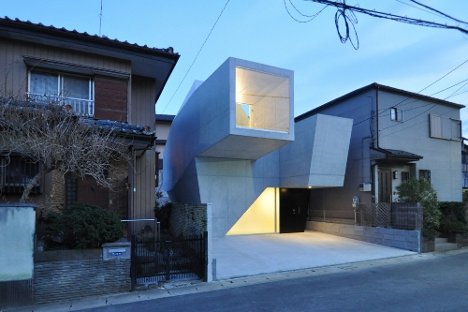
Among the traditional houses and run-of-the-mill apartment towers in Abiko, Japan sits a concrete monolith. Its angular facade is reminiscent of a massive sculpture, but this unusual object is actually a single-family home.
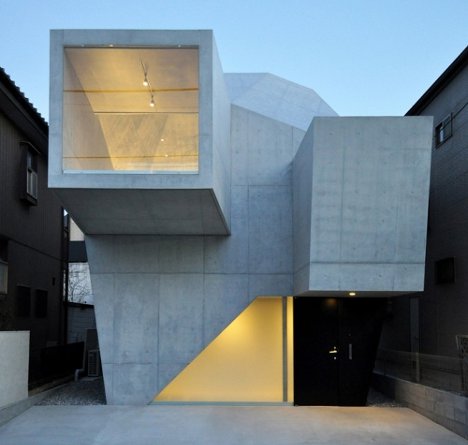
Designed by Fuse-Atelier, the Abiko House is a mere 80 square meters. The home sits on soft ground that necessitated the use of stakes to support its weight.
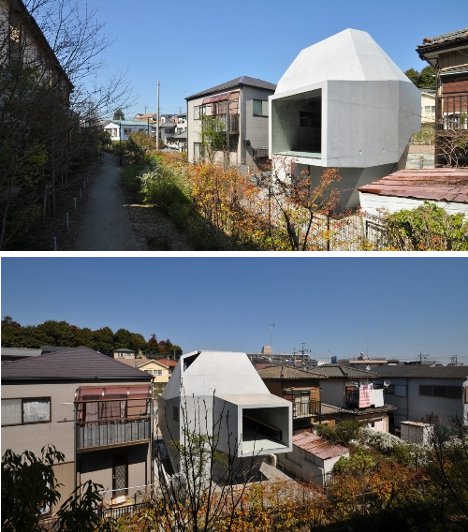
The residents of the impressive home wanted a distinctive building that was bathed in natural light on the inside. This is achieved partially with the massive window on the front protrusion.
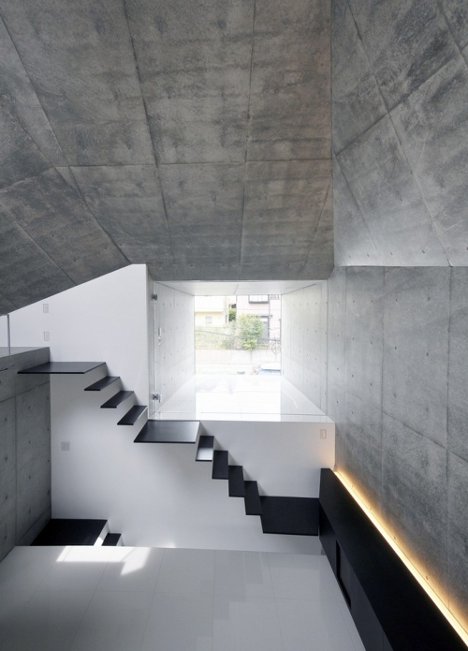
This protrusion houses the living and dining rooms which are accessible via a floating staircase. Although this is the type of staircase you wouldn’t want small children to use, it reinforces the airy, open feeling of the home’s interior.
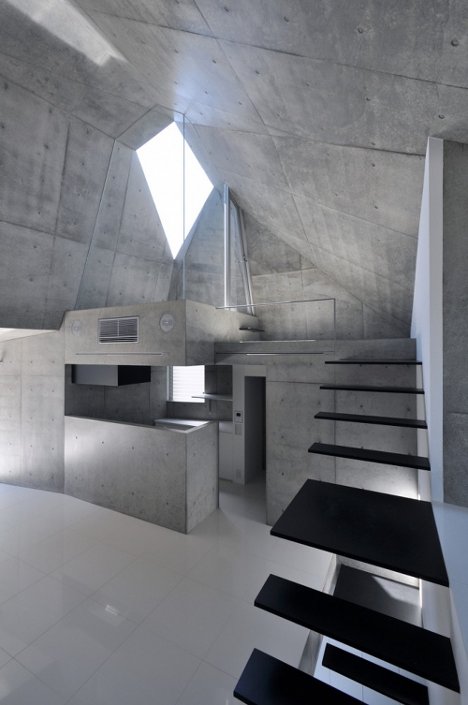
Soaring above the streets, the home somewhat resembles a gigantic concrete periscope. The large front window is at such a height and position that neighbors and passers-by are prevented from seeing in.
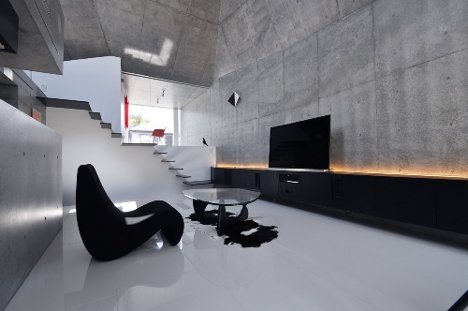
The heaviness of the concrete that comprises the home is perfectly offset by the home’s airy minimalist interior. But we have to imagine the echoes and dampness that would plague a cavernous concrete house might drive the residents to distraction.
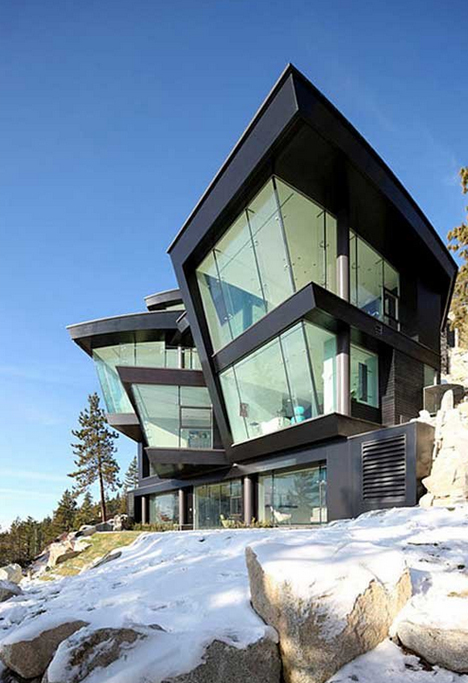
Its exterior shape is more than just an affection, though at first glance it almost looks to have been formed by natural elements – waterfront wind and waves.
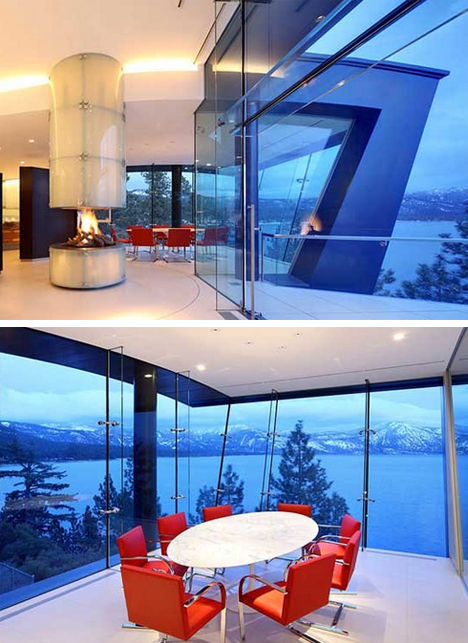
However, these contortions translate into a series of spaces where convex and concave moments of glass inform remarkable views back out of this Lake Tahoe retreat by Mark Dziewulski Architect.
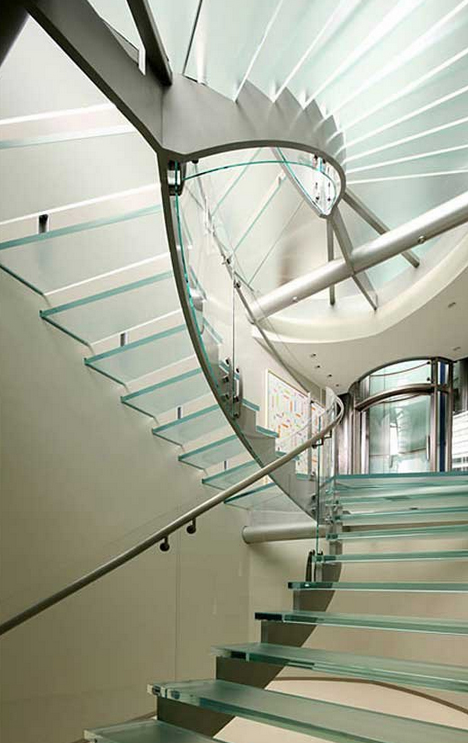
A stunning tapered oval glass staircase wraps up a central tower, dynamically depositing residence on different floors facing different ways back out onto the natural landscape.
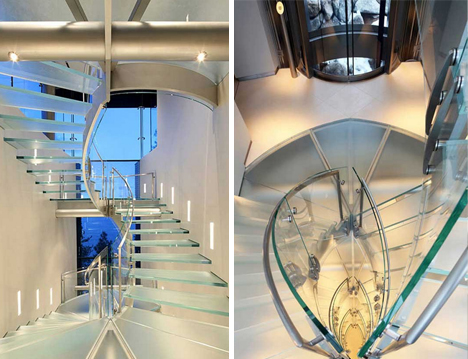
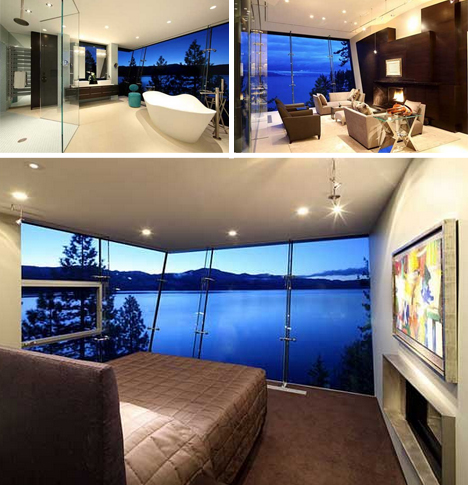
Strategic overhangs in individual spaces provide daunting experiences in places like the bedroom, but a corresponding feeling of connection with the outdoors (as well as shade from the high and hot summer sun).
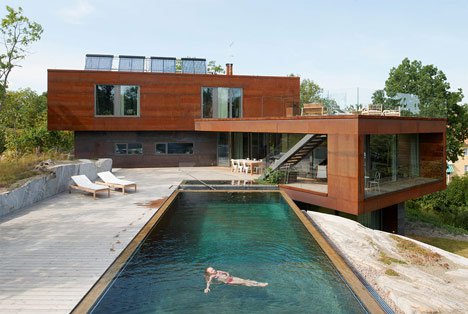
This home in Stockholm, designed and built by DAPstockholm, is a study in the enjoyment of nature from a man-made structure. Called the Villa Midgard, the lovely three-story house has been set into the surrounding inclining landscape.
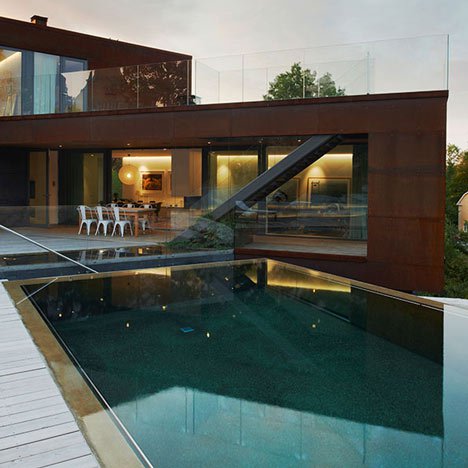
The stand-out feature is an infinity pool reminiscent of a serene forest lake. Clad in dark concrete and sheltered by the stable mass of the home itself, the pool offers residents a quiet, protected place to be at one with the water.
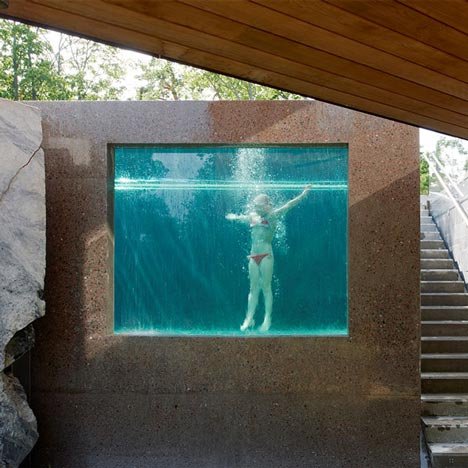
A huge window in one side of the pool offers swimmers a view of the home’s entrance when they are underwater. From here, they can greet visitors or put on a dazzling underwater show.
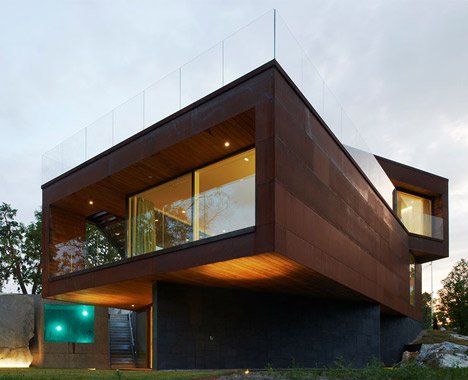
The rest of the home’s features are equally stunning and equally in tune with nature. The owners specified that their new home must have a master bedroom that bathes in morning light and a space from which they can sit and listen to the pouring rain, as well as an easy-care exterior.
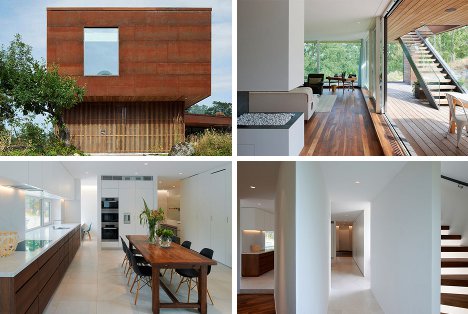
To comply with these requests, the architects created a concrete home clad in Corten steel. Other natural materials such as beech, walnut and marble are used throughout the home. The bulk of the home is split into two offset segments, maximizing the access to natural light and emphasizing the idea that the home is part of the natural landscape.
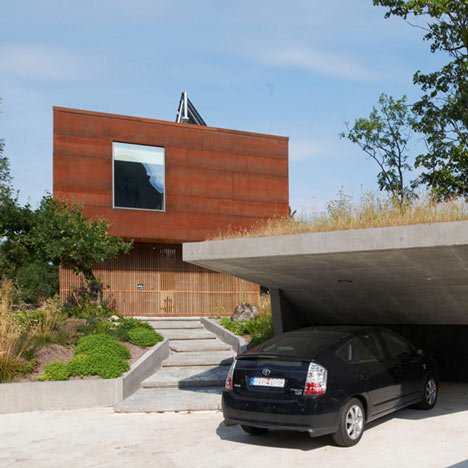
A carport has been blasted into the slope of the mountain on which the home sits. Its top is covered in vegetation, making it almost disappear into the land. The home’s tallest elevation and rooftop terrace also feature local grass, again visually reinforcing the home’s unity with its surroundings.
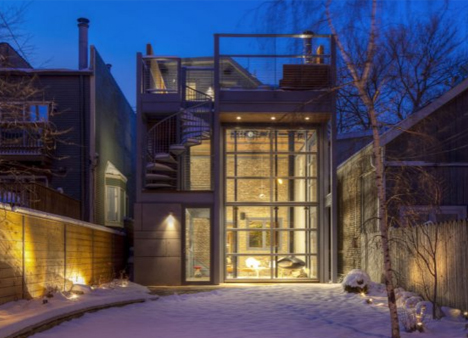
This home extension is all about the outdoors, from bringing natural light and ventilation to the interior to pushing its occupants out into a big backyard or up onto a stunning rooftop deck.
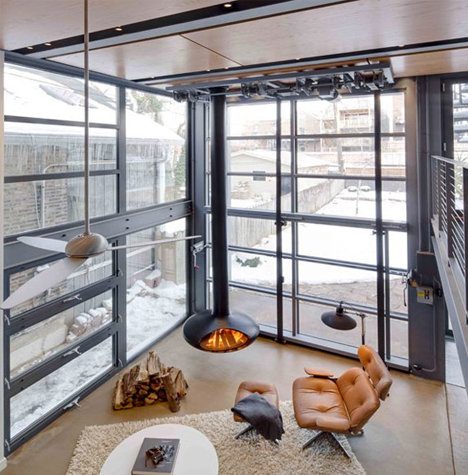
From their time in England, the owners wanted the familiar feel of an open conservatory in their Chicago home addition – and got their wish in spades from dSpace Studio.
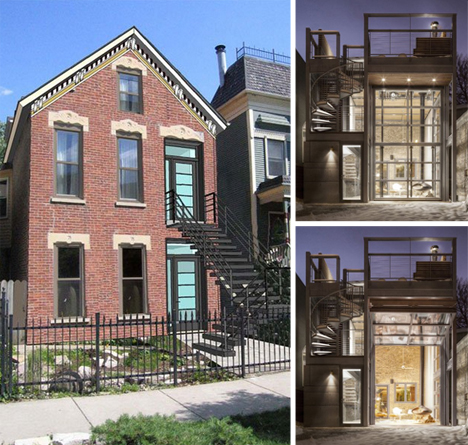
In front, the original 1880s Italianate facade can be found intact, sharply solid against thin steel and light planes of glass behind.
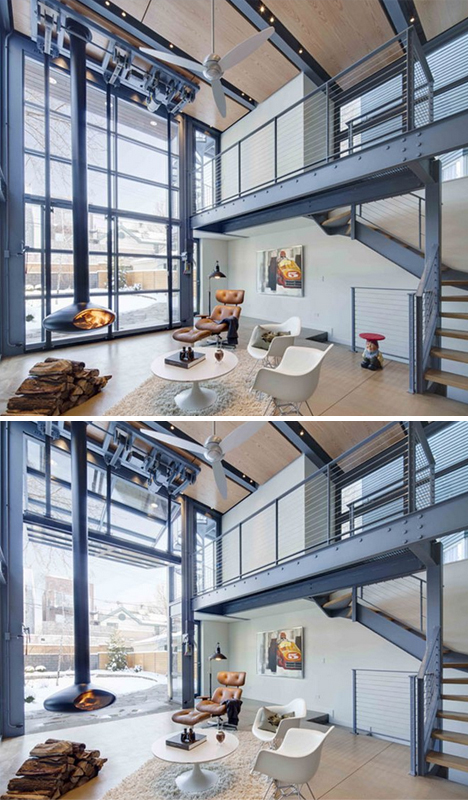
Meanwhile, the operable six-meter, garage-like door makes an open-feeling space actually open up out into the yard on demand as well.
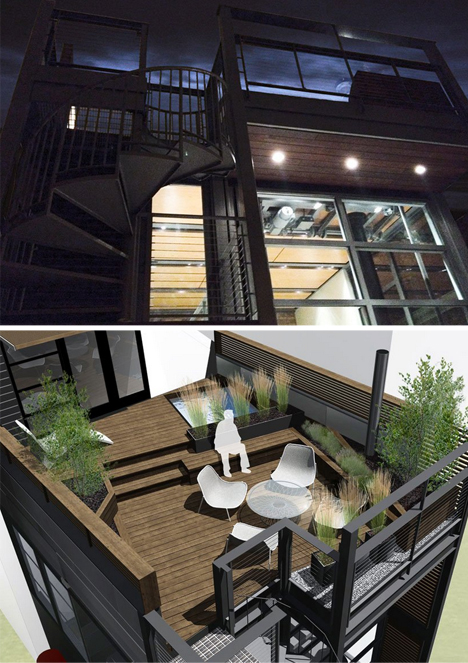
Sustainable design elements include recycled materials, energy efficient LED lighting, rainwater collection system, drought-tolerant plantings, high-efficiency mechanicals, solar hot water system, radiant floor heating, and infrastructure for future geothermal installation.
 In the last three articles of our Green Guide to Prefab series we discussed the history of prefab design, the evolution of mobile homes into modular prefabricated homes, and ways to maximize eco-efficiency when choosing a site for your prefab. Despite certain components being prefabricated off-site, prefab homes actually offer a lot in the way of customization, allowing individuals to customize many features to create the perfect living environment for the lifestyle of the owner. In the latest article in our Green Guide to Prefab series, we’ll be taking a closer look at the idea of an owner’s lifestyle, and we’ll tell you the questions you need to ask in order to build a home that fits with your life. Read ahead as former Lindal Cedar Homes CEO and green design consultant Michael Harris returns to Inhabitat to walk us through the business of examining lifestyle and understanding why this element is crucial in creating a happy, comfortable and enduring home.
In the last three articles of our Green Guide to Prefab series we discussed the history of prefab design, the evolution of mobile homes into modular prefabricated homes, and ways to maximize eco-efficiency when choosing a site for your prefab. Despite certain components being prefabricated off-site, prefab homes actually offer a lot in the way of customization, allowing individuals to customize many features to create the perfect living environment for the lifestyle of the owner. In the latest article in our Green Guide to Prefab series, we’ll be taking a closer look at the idea of an owner’s lifestyle, and we’ll tell you the questions you need to ask in order to build a home that fits with your life. Read ahead as former Lindal Cedar Homes CEO and green design consultant Michael Harris returns to Inhabitat to walk us through the business of examining lifestyle and understanding why this element is crucial in creating a happy, comfortable and enduring home.
For many people, building a home is an exciting prospect that draws upon long-time dreams of creating a living environment that reflects their sensibilities, individuality and independence. Those who opt for prefabricated housing over moving into new communities of cookie-cutter tract houses are typically stirred most by those values — and this is what makes them as unique as the houses they seek.
Some of you are looking forward to planning your new home from scratch and are excited by the opportunity to proceed at a leisurely pace as you plan every detail with an architect. Others of you have may have already designed your dream home on paper and are seeking an expert such as an engineer to help you refine your creation and bring it to code. But there several of you who aren’t working from scratch, but are instead seeking out an existing design that will serve as a good starting point to developing your home. Prefab design is an attractive option for those in search of a perfect lifestyle fit without investing all the time, anxiety and headache that comes with building something from scratch.
One of the most important first steps to building a new home is to decide which of the above approaches best describes your planning temperament. Once you’ve done that, you need to explore this with prefab home builders. By visiting several builders you’re more likely to find one who can provide you with the type of planning experience that suits your lifestyle and temperament. It is important to ask a lot of questions to determine who is your best fit — your choice will bring you closer to making your dream home a reality.
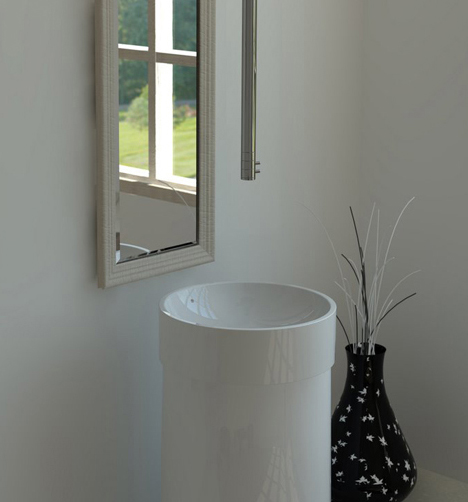
Sometimes you just want to dip your head under the faucet, freshen up a bit and be on your way – not enough time or desire to take a full-on shower.
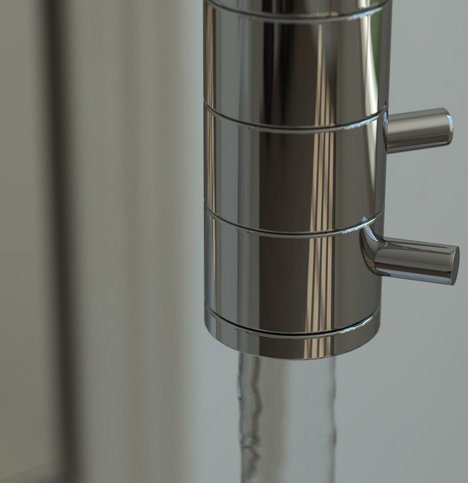
Thus, this handy hybrid – it functions fine as an ordinary bathroom faucet, but is suspended from the ceiling so you can cover a bit more territory as needed.
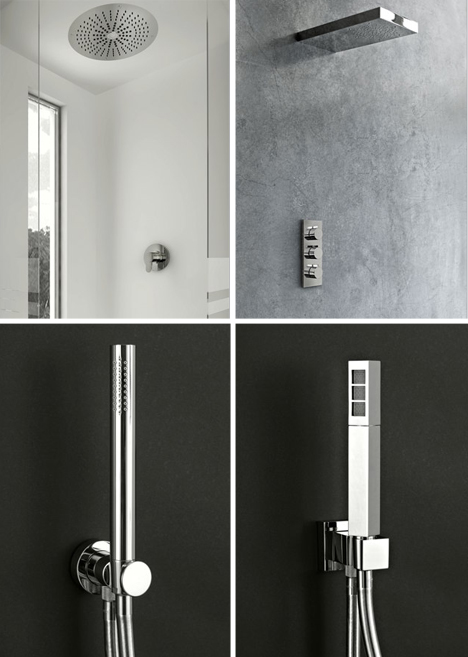
Other ceiling-mounted showers and mobile shower heads from Signorini are all fine and good, too, but somehow the combination piece manages to go beyond just classy to become innovative as well.
Copyright © 2016-2024All Rights Reserved
Powered by Wordpress Web Design on the Genesis Framework